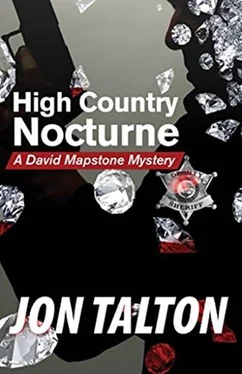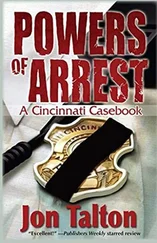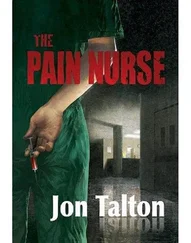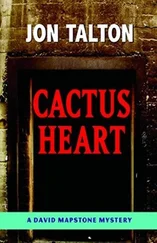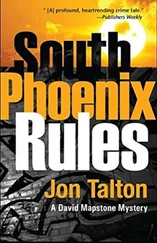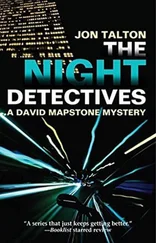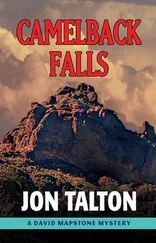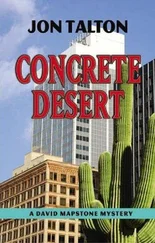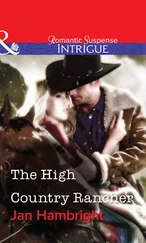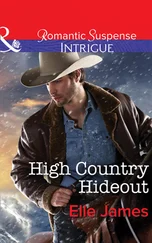
Jon Talton
High Country Nocturne
The eighth book in the David Mapstone Mystery series, 2015
In the end, the truth was almost beside the point.
Ten o’clock. Two o’clock. I knew the drill.
It had been many years since I had been pulled over by the police, almost as many years since I was a young deputy sheriff doing traffic stops myself. When I did, I wanted to see the driver’s hands right where mine rested now.
Ten o’clock and two o’clock on the steering wheel. Left hand at ten. Right hand at two. Where I could be sure he wasn’t concealing a gun.
Extra points if he had shut down the engine and held his driver’s license and vehicle registration.
Unless the driver was being extra careful because he was a bad guy.
Then I would be on extra guard.
Traffic stops were scary, especially if they were on lonely roads after midnight. It was you and the driver and anybody else in the car and the darkness. Backup might be miles away.
You might think you were pulling over a driver to tell him his taillight was out. Unless the driver had killed his girlfriend or robbed a Circle K five minutes before and didn’t know you were only being Deputy Helpful.
When I was a rookie, these stops were the only part of the job that scared me.
Now I was the driver and Sharon Peralta, my partner’s wife, sat beside me.
My hands rested at ten and two, and the digital clock read one o’clock in the morning.
I had taken a chance roaring north out of Phoenix on Interstate 17 in her silver Lexus IS 250C convertible.
I took a chance doing ninety-five when the posted speed limit was twenty miles-per-hour lower. With budget cuts, traffic stops by the Department of Public Safety-the highway patrol-had plummeted so low that people started calling it the “shadow patrol.”
But the shadow patrol nailed me as I climbed out of Camp Verde. Red lights and blue lights followed me as I took an exit that led down a cut to a crossroads. I pulled off the pavement onto the dirt ten yards before a stop sign.
A spotlight swept the inside of the car, then focused on our rearview mirror. That was standard procedure to keep the occupants of the stopped vehicle from seeing into the police car behind them.
I had already used the button to roll down the window when I heard the officer’s voice.
“Do you know why I stopped you, sir?”
A Southern accent washed through my ear canal.
“I was speeding.”
A flashlight beam flashed across the interior, lingering on our laps and our feet. She asked for my driver’s license and registration. I handed them over.
She stood to the rear of the door so I couldn’t see her. Her tactics were sound.
“Please stay inside your vehicle, sir. And please shut off your lights.”
One didn’t hear many Southern accents in Arizona today, even though many of Phoenix’s early settlers were ex-Confederates. That accent had two broad and mutually exclusive presentations, hick and high-class magnolia. She was definitely the latter.
I said, “I’m sorry, Sharon.”
As if she hadn’t been through enough already.
All the lights on the DPS cruiser shut down.
Just a few years ago, we would have been left in profound darkness, with only the highway, miraculously blasted through the rugged country, as a reminder of modernity. This was the exit to Montezuma’s Castle National Monument, seven-hundred-year-old cliff dwellings. At night, nobody would be here. The darkness would be primeval.
Now a tribal casino sat on a bluff to the east, polluting the high desert sky. If you asked me, it was a monstrosity. But nobody asked me. Nobody had asked me about adding five million people to the state since I was a child. I shook my head.
“Who is Sharon Peralta?” The cop had returned, stepping lightly.
“I am.” Sharon leaned forward and squinted into the flashlight beam. Her eyes were tired.
“Is this your vehicle, ma’am?”
She said that it was.
“Do you know this man?”
“Yes, he’s a friend.”
“Sir, please step out of the car. Ma’am, you stay here.”
I had been afraid this might happen, so I came out with it.
“I’m armed.”
“Why is that, sir?” The magnolia debutante voice didn’t seem stressed. And it was not as if she could ask to see my permit. Not in Arizona, which had some of the most liberal gun laws in the country.
“I’m a private investigator.”
She asked me where the gun was and I told her it was in a holster on my belt. Then she told me to place it slowly on the dash and I did, carefully, barrel forward, hand away from the trigger. My familiar Colt Python.357 magnum revolver. But with the four-inch ribbed barrel, it was a mean-looking firearm. Her flashlight beam lingered on it.
“Anything else?”
Be respectful. That was another part of the drill. “No, ma’am.”
It was even the truth. I didn’t take time to bring Speedloaders with extra ammunition or a backup piece after the phone call woke me at nine minutes after midnight Saturday morning. I was sleepy and in a hurry and on the drive up into the High Country, I thought this had been a rash move. Now, I was glad to have only one firearm to explain.
The flashlight clicked off.
“Please step out of the car.” Now her voice had lost its lilt. Or maybe I was being nervous. One thing was sure; I was wide-awake.
I opened the door and slid out, dropping my feet onto the hard-packed dirt and getting my first look at the DPS cop.
She was more than a head shorter than me, dressed in the standard uniform: tan slacks, tan long-sleeved shirt, shoulder patch in the shape of the state and colors of the state flag, seven-point gold star above her left pocket.
Thanks to the casino’s neon, I could see that her hair was strawberry blond, tied back in a bun. Her features seemed attractive, even the slightly weak chin. Her expression was camouflaged by shadows. Age? Around thirty.
“Walk to the back of the car and put your hands on the trunk, please, palms down.”
I did as she asked. The cold made me shiver. We were three thousand feet higher than Phoenix, where it was resort weather and the wrecking ball of summer only a bad memory. That was why Lindsey had given me my leather jacket. But it was in the back seat and I only had on a T-shirt, jeans, and athletic shoes.
The metal of the trunk conducted the cold through my hands, adding to the discomfort. It must have been a quiet night for her to take this much time. Or she recognized Sharon’s last name. That might be problematic. I wished she would write the ticket, give me the lecture, and send me away with a “drive safely, sir.”
Instead, I heard a discomfiting snap and she told me to turn around.
Her gun was out, aimed at me.
It was pointed at my face.
In the academy, they call this aiming at “the lethal T” or the “fatal T.” The T consisted of the eyes and nose, a shot guaranteed to kill instantly.
Officers are usually trained to shoot at a suspect’s “body of mass,” the torso. That is an easier, surer target. But more criminals are wearing body armor.
She was not in a combat shooting stance, with both hands on the weapon for stability. Instead, she held it confidently in one hand, her right. That was unusual.
Seeing her finger on the trigger heightened my concern.
This was something definitely not taught at the academy.
Officers learn to keep the trigger finger aligned with the side of the gun’s lower receiver and slide-“ready to engage,” as the instructors put it. This prevents an accidental discharge.
Читать дальше
